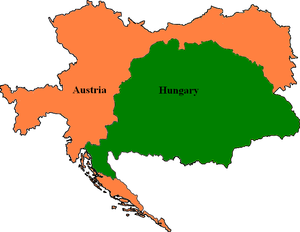| This article needs additional citations for verification. Please help improve this article by adding citations to reliable sources. Unsourced material may be challenged and removed. Find sources: "Dualism" politics – news · newspapers · books · scholar · JSTOR (January 2021) (Learn how and when to remove this message) |
| Part of the Politics series |
| Politics |
|---|
| Primary topics |
| Political systems |
| Academic disciplines |
Public administration
|
| Policy |
| Government branches |
| Related topics |
| Subseries |
|
|
Dualism in terms of politics, refers to specific political concepts that are related to the functional or structural duality of a particular political system. In some states, functional dualism is manifested through the division of power between the two main branches of government (legislative and executive). In other, mainly complex states, structural dualism is expressed as a division of power between two constitutive units.
Functional dualism is common in parliamentary systems, like those in the Netherlands, Luxembourg, and Sweden, where the term dualism is used to refer to the functional separation of powers between the cabinet and parliament. Unlike the presidential system, the legislative branch consists of the cabinet together with the parliament and cabinets are formed on the basis of a majority in parliament. Unlike the Westminster parliamentary system, cabinet ministers cannot be members of parliament. An important political issue is whether ministers and leaders of governing parliamentary parties should prepare important political decisions. According to the dualistic position, members of parliament of governing parties should function independently of their cabinet. The term monism is used to refer to a stance that important decisions should be prepared by the members of the governing coalition in order to promote political stability.

Structural dualism is manifested in those dual states, like dual monarchies, that are constituted as real unions. One of the most notable examples of state dualism in modern history was the Austro-Hungarian Monarchy (1867–1918), where dualism was manifested as an official political doctrine of co-equality between Austria and Hungary. The phrase "during dualism" (Hungarian: dualizmus alatt) is used in Hungarian historiography as shorthand for "during the Dual Monarchy."
Trialism
As in dualism, the same functional and structural distinctions are also manifested in trialistic political concepts, referring to three instead of two political subjects. Functional trialism emphasizes the distinction between the three main branches of government (legislative, executive, and judicial) while structural trialism refers to the internal political structure of triune states. In history, one of the most notable examples of trialism was manifested as a political concept that the advocated transformation of the dual Austro-Hungarian Monarchy into a triune state, by creating a third constituent entity. The proposition was that this was to be achieved by the equalisation of the Kingdom of Croatia-Slavonia to the two other monarchies in the empire, a conjecture that was supported by the assassinated Franz Ferdinand. (see Assassination of Archduke Franz Ferdinand).
See also
Citations
General and cited references
- Kann, Robert A. (1974). A History of the Habsburg Empire: 1526–1918. Berkeley: University of California Press. ISBN 9780520024083.